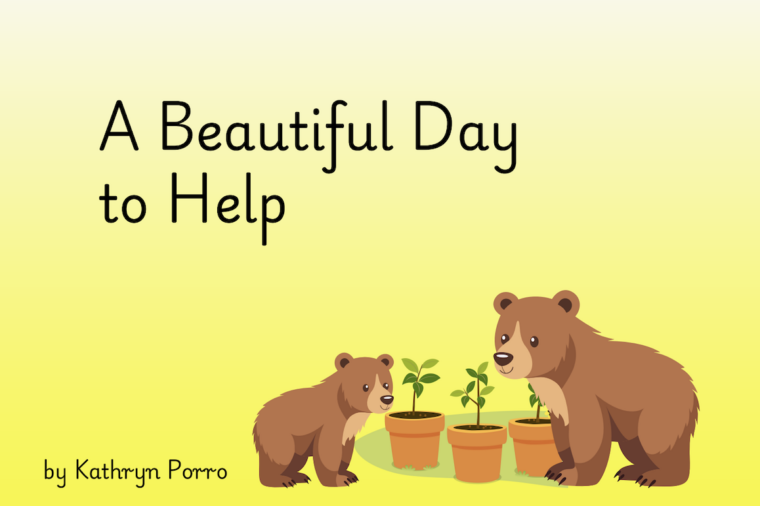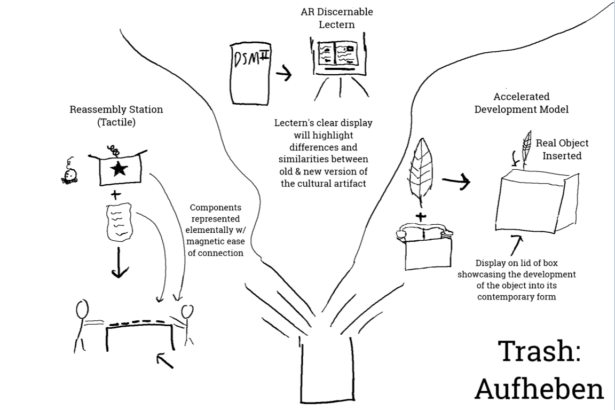Acting in the service of others can unlock a sense of joy, connection, and purpose. From small acts of kindness to lifelong commitments to serve, helping others gives our lives meaning. A Beautiful Day to Help is a children’s picture book that communicates the benefits and ease of service and social impact. Bear takes a walk to visit family and friends. They are all busy. Where does Bear fit in? Through small acts of service, Bear finds his purpose, his place, and his inner joy.
The intent of this picture book is to teach two key concepts: the benefits of service and the low barrier to entry that can exist in serving one’s community. Putting Grant Wiggins’ Understanding by Design methodology to use, I began with what I wanted the learner to understand and worked backwards from there. The output of this instructional design project was originally intended to be a lesson plan that would be used with teenagers in a peer-to-peer setting, teaching about the benefits of service and the impact that helping others can have on our own flourishing. As I considered the various mediums that could be used to teach these understanding goals, I ultimately landed on a children’s picture book. In doing so, I learned one key takeaway: anything can be a learning experience if designed properly.
Throughout the design process, I also considered the unintended consequences of my instructional design. In reading this story, would the reader feel guilty or sad if they have not viewed their contributions to their community as meaningful in some way? Would they be discouraged from acting in the service of others? Would they miss the message entirely? To combat this, I applied some of the concepts from Parvin & Pollock’s (2020), Unintended by Design reading from Week 8. I attempted to anticipate what a reader may think or feel as Bear goes on his journey. In doing so, the narrative became simplified, further portraying the low barrier to entry when making a difference. Even small acts of kindness, such as helping a friend with a task, can result in a sense of joy, connection and purpose.
Throughout this design journey, I also learned how to intentionally incorporate opportunities for reflection and active processing in a learning experience. At the end of the narrative, a new character, Bird, is introduced. The idea here is for the reader to begin to wonder if Bird learns from Bear’s example and also contributes to the community in some way. By leaving the story a bit open ended, with a final illustration to guide the thinking, the reader is offered this opportunity for reflection and active thinking about the positive ripple effect that service can have on a wider community.
In conclusion, the process of writing this picture book afforded a number of opportunities to learn about learning design. From varying outputs, to the application of concrete methodologies, to providing space to the learner to reflect, learn and process – this journey has been incredibly formative in learning about what makes a truly impactful learning experience. I am looking forward to my continued work on this project and bringing this story through to publication.



